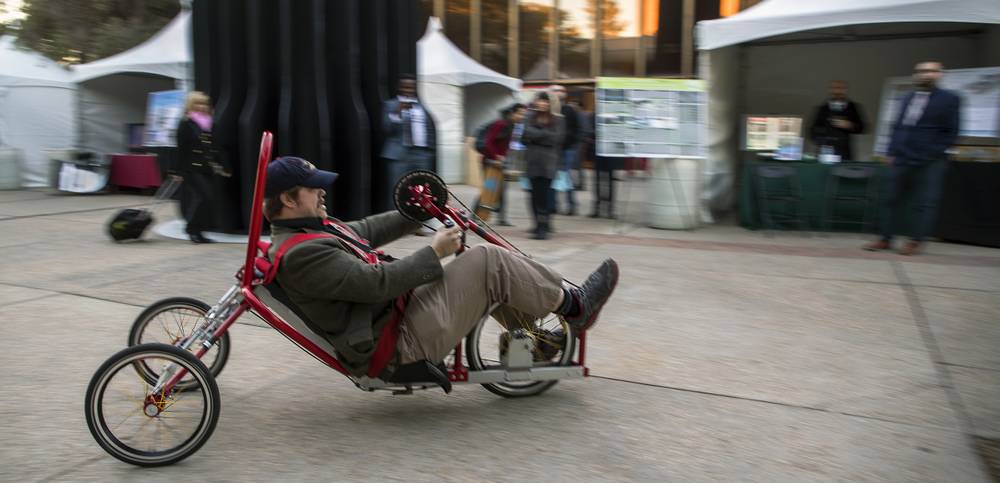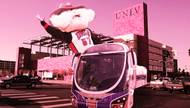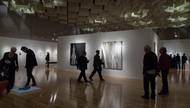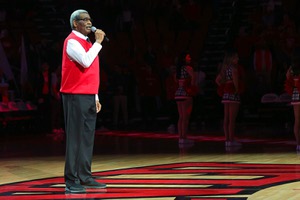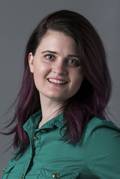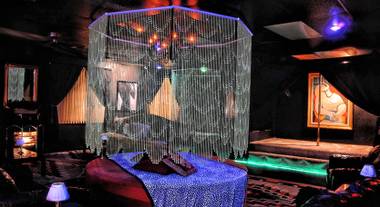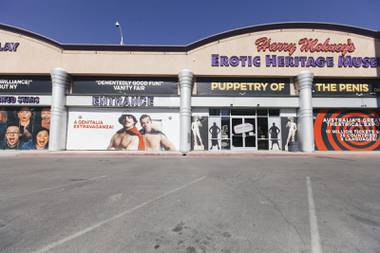A toaster that butters your bread. A remote-controlled IED (bomb) detector that could save lives. A new app for meeting friends in person. A solution for a crowded I-15 on-ramp. A smart ballet shoe.
These are just a few of the projects UNLV engineering students presented last week as part of the Fred and Harriet Cox Senior Design Competition (winners will be announced on December 14). Spanning the full creative cycle from idea to plan to working prototype, this capstone project lets seniors apply everything they have learned. That would be a lot of math and science with additional courses in a more specific discipline, like civil and environmental engineering or computer science. This fall, nearly 100 students participated, a record.
Electrical engineering student Michael Tomakili hopes his group wins the sustainability prize for its Microgrid Test Platform, which would help distribute power more efficiently. “A lot of the projects last year were geared towards defense, drones and weapons,” Tomakili says. “I feel really proud that a lot of students this year are geared towards sustainability.”
According to professor Brendan O’Toole, studying engineering teaches students how to think. “There’s a need for engineers now,” says O’Toole, UNLV’s mechanical engineering department chair. “Probably the biggest benefit is that they solved so many problems. They’ve also failed at solving problems, which is a big learning experience. You’ve gotta learn that it’s okay to fail, to learn from that failure and improve.”
On this day, failure is in the rearview mirror as O’Toole walks around students’ booths with a sense of joy. He seems impressed by improvements upon the humble shipping pallet; a safety sensor that follows pedestrians with a spotlight while they cross the street at night; a human-powered vehicle that uses both a hand crank and a foot pedal; and an offroad vehicle spring system. “They work so hard on these projects, to see them excited and talking about them is a very good part of the job,” O’Toole says. “Some I’ve seen struggle, and they finally got something working that came out really well. That’s great to see. They can learn more in doing this type of project than in a traditional class.”
One interdisciplinary team of mechanical and electrical engineering students created a solar-powered charging table called SOLARjuice, which will charge your devices while the solar panel acts as a sunshade. A battery keeps it going when the sun doesn’t shine and a wifi amplifier completes the package. “The four of us are really excited about it; this is something we’re thinking about getting a patent on,” says student Sadie Stutzman, who envisions SOLARjuice appealing to hotels, casinos, college campuses and coffee shops. “We’re really thinking about doing it. With a couple of changes, we can really be onto something here.”
